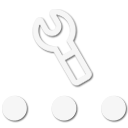
Influencer I
- 2,358
- First Name
- Dillon
- Last Name
- Wilke
- Member #
-
20298
- Ham/GMRS Callsign
- KJ7LVO/ WRQL275
- Service Branch
- USAF
If you think you'll want to travel outside of the US and Canada stay well clear of diesel. Or build an older non common rail injection, non after treatment equipped powered rig. If you want to talk about this more I'm more than happy to, I just don't want yo derail your thread.
Honestly though, if it were me, F250, gas v8, extended cab, short box. One of the service trucks I used for field work was an extended cab shortbox 250, it had TONS of room. That would also keep costs down a bit. But if you think you need the extra payload a 350 will give you then get one. But drive train wise, the 250 and 350 (with single rear wheels) can be spaced the same.
Honestly though, if it were me, F250, gas v8, extended cab, short box. One of the service trucks I used for field work was an extended cab shortbox 250, it had TONS of room. That would also keep costs down a bit. But if you think you need the extra payload a 350 will give you then get one. But drive train wise, the 250 and 350 (with single rear wheels) can be spaced the same.







